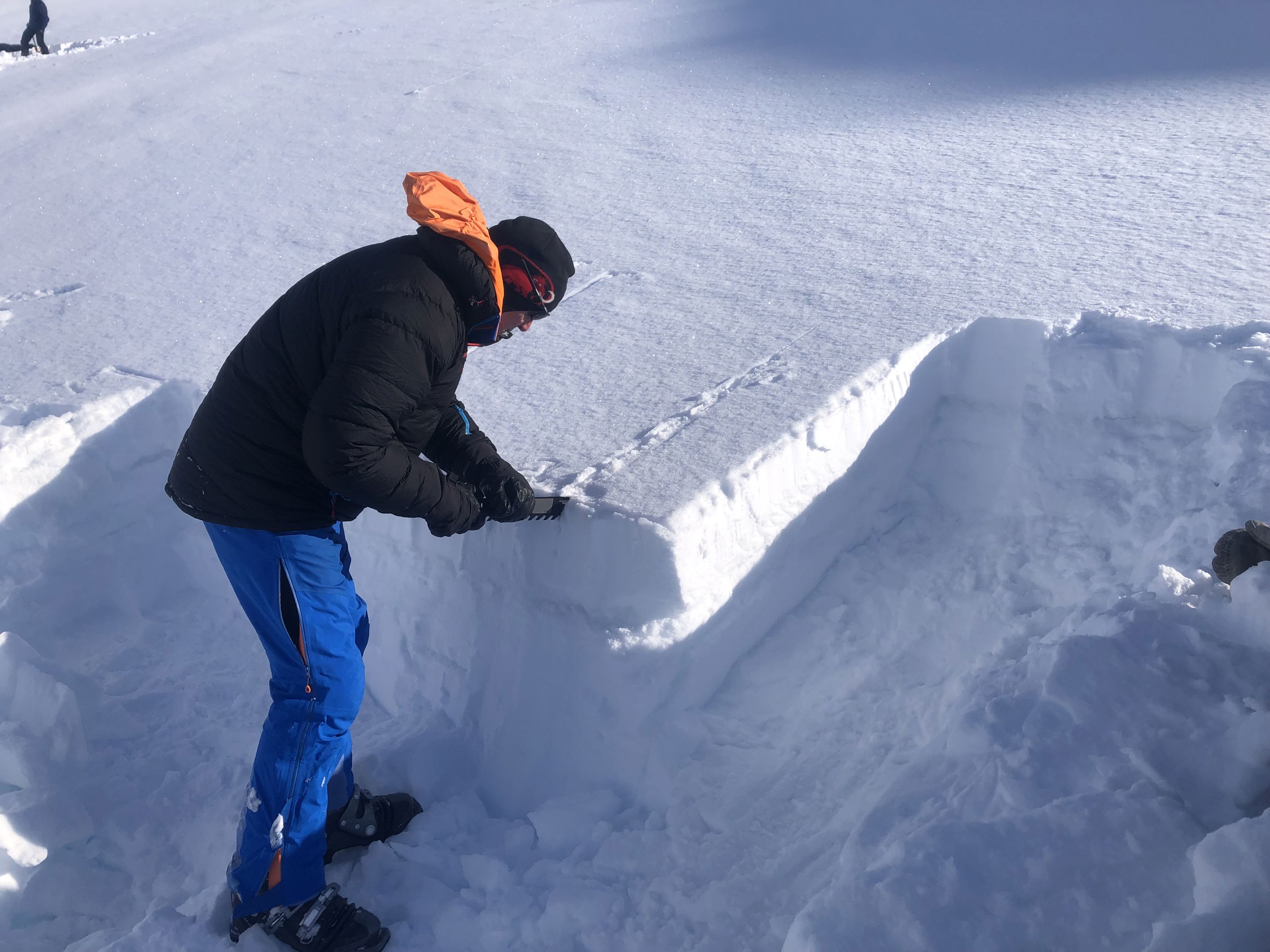"I hope everyone going on trips this winter follows these guidelines”
So far this winter, no one has died in avalanche accidents in this country, but it was only a few weeks ago that four Norwegian lives were lost in Val-Cenis, France.

NGI's snow avalanche expert, Christian Jaedicke, checks the stability of the snow layers. ( NGI)
NGI—the Norwegian Geotechnical Institute—has been keeping statistics and investigating many of Norway's fatal avalanches since 1972. On behalf of local police authorities or others responsible for safety, NGI assists in acute avalanche incidents.
“Since autumn 2008, 108 people have died in avalanches in Norway,” says NGI's avalanche expert Christian Jaedicke.
He points out that this season's absence of fatalities so far should not lead people to lower their guard when traveling in the mountains.
Three things all skiers must consider
“First things first. Don’t move in avalanche-prone terrain when there is a high risk of avalanches,” says Jaedicke.
Jaedicke has been researching avalanches at NGI for over 20 years, and he knows how deadly it can be if you don't pay close attention. He highlights three things all skiers must consider when traveling in avalanche-prone terrain:
1. How steep is the terrain?
2. What is the snow cover like?
3. What is the weather forecast, and what does the avalanche warning say?
Jaedicke says that points 1 and 3 are the easiest to assess:
“If the terrain is steeper than a 30-degree slope, avalanches can occur. If you stay below a 30-degree slope, you are safe. It's a simple rule,” says Jaedicke.
He also urges people to respect the weather forecast and issued avalanche warnings. He believes that in many cases, it should not be a surprise that avalanches occur:
“It is easy to get an overview of the avalanche warnings, for example, through Yr or Varsom.no, which is the national warning channel for natural hazards. Get an overview there and do not move into steep terrain, or under steep terrain, if the warnings indicate a risk of avalanches where you are,” says Jaedicke.
Very difficult to assess the snow cover
Point 2, assessing the snow cover, Jaedicke believes, is much more challenging than keeping an eye on the slope and warnings.
“The snow lies in layers, and the snow you see on top is only part of the situation. Understanding the snow's behavior under load is challenging, and unfortunately, many overestimate their knowledge here. I recommend following the warnings and how steep the terrain is and not putting too much weight on your assessment of the snow cover. Unfortunately, this may mean skipping the descent in wonderful new powder snow. Still, no descent is worth the risk of being caught in an avalanche,” says Jaedicke, who himself enjoys off-piste skiing in untouched nature.
Remember avalanche equipment, but don't think good equipment makes you safe!
Some skiers may feel safe because they have equipment that can help if an avalanche should occur. Jaedicke warns against thinking that you can either outrun the avalanche or that equipment will make you almost guaranteed to survive when you are caught in an avalanche. One-third of those caught in avalanches die when the avalanche stops due to injuries. People in the group or the area can rescue the other two-thirds. However, you only have 15-20 minutes to find and dig out the person caught in the avalanche sufficiently to free their airways. However, for the last group, it is clear that avalanche equipment such as transmitters/receivers and possibly airbags will increase the likelihood that the rescue operation will succeed quickly.
NGI has its research station and a research field where they trigger avalanches to learn more about the dynamics of an avalanche. There, they have measured that an avalanche moves at an enormous speed of 50 meters per second.
“If you trigger an avalanche, the masses come so quickly that it only takes a moment before you are buried under large amounts of snow. The snow is so compact that you often have no chance of digging yourself out. The area where others will search for you will be large; it's like looking for a needle in a haystack. It doesn't take long before you don't have enough oxygen to survive under the snow, even with all modern equipment,” says Jaedicke.
He recommends everyone plan their trip well, check the route choice and how steep it is, think about alternative routes, and assess before they leave home whether the route choice is suitable for possible avalanche danger. On trips in steep terrain in winter, you should always have an avalanche beacon, probe, shovel, and other safety equipment such as a helmet.
Fact box:
NGI – the Norwegian Geotechnical Institute has been researching avalanches at the Fonnbu research station and Ryggfonn test field for 50 years. Ryggfonn is one of two such test fields worldwide – the other is in Switzerland.
Here you can see the full overview of those who have died in avalanches since 2002.
